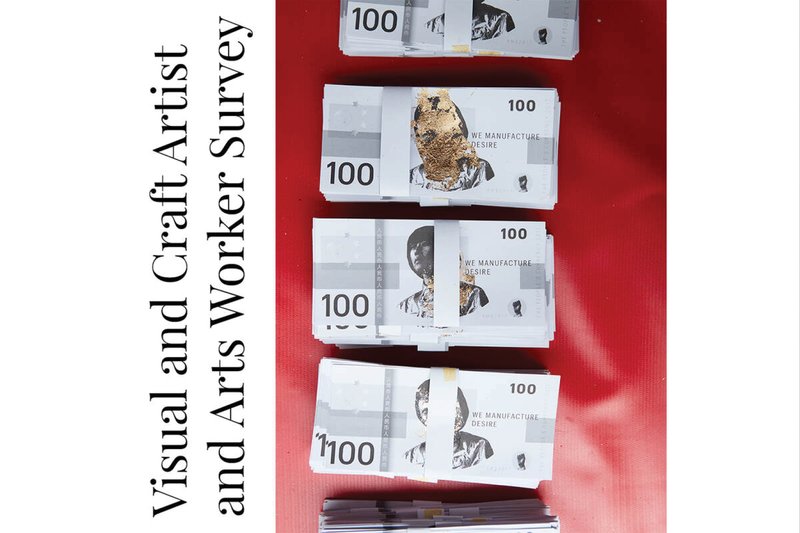Visual Arts Work survey: Help us improve working conditions
Calling all visual artists, craft practitioners & arts workers! We need your help. Tell us about your practice and career in our short 10 minute survey, writes Marnie Badham.
Calling all visual artists, craft practitioners & arts workers! We need your help. Tell us about your practice and career in our short 10 minute survey, writes Marnie Badham.

Image: Eugenia Lim, performance documentation from The People’s Currency (2017), Federation Square, Naarm/Melbourne. Commissioned by 4A Centre for Contemporary Asian Art for AsiaTOPA 2017. Photo by Zan Wimberley, courtesy of the artist and STATION.
Incomes in the Australian visual arts and craft sectors are not only lower than average across the population, but are also lower than other artforms. This is what the existing limited data tells us. To fully understand the organisation and health of the sector, we need a clearer picture of your work, the shape of your career, and how it intersects with your work in other areas.
We know arts careers are hybrid and diverse: you may be a self-employed artist and work as a gallery arts educator to subsidise your practice. You may also take external contracts for digital design and sometimes work in schools or with communities to make public art. Sometimes you receive small grants or are paid for speaking gigs.
Over the years, arts work has become more diverse, digital, and international. Artists, craft practitioners, and arts workers also make critical contributions to other sectors like health, education, and community.
Many practices have been overlooked and misinterpreted by existing research. These include those by First Nations artists, culturally and linguistically diverse artists, as well as socially engaged, community based, and public art practices. Additional data and research will help to provide a clearer understanding of the multiplicity of creative practices and careers in the sector.
Your answers will help inform practical interventions for industry and policy to improve the economic, social, and cultural wellbeing of visual artists, craft practitioners, and arts workers. Our research brings together economic data, alongside new social, policy, and artist-led research to build on sustained efforts of consultation, advocacy, education, and forms of sector industrial organisation across Australia.
This project is funded in part by the Australian Government through the Australian Research Council as Ambitious and Fair: strategies for a sustainable arts sector (LP200100054), a collaboration between Grace McQuilten, Marnie Badham and Chloë Powell at RMIT University; Kate MacNeill and Jenny Lye at The University of Melbourne; Esther Anatolitis at Test Pattern; partners National Association of Visual Arts (NAVA) and the Australian Museums and Galleries Association (AMaGA); and with support from Terri Janke and Company Indigenous Lawyers and Accessible Arts.
About the Author
Marnie Badham is a socially engaged artist-researcher working at RMIT University. She has had the pleasure of collaborating in NAVA’s important work to revise the Code of Practice for the Professional Australian Visual Arts, Craft and Design Sector which provides a set of best practice, ethical guidelines for the conduct of business between arts practitioners and employers in the Australian visual arts sector.